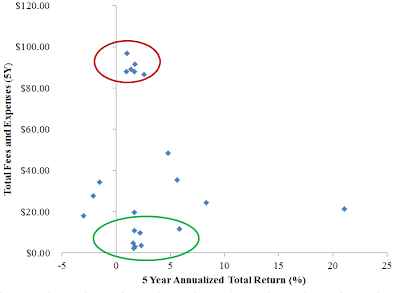High-Frequency Trading and Market Volatility
(Apr 2012)
The "flash crash" of May 6, 2010 -- when the Dow Jones Industrial Average dropped by 9% in a few minutes and quickly regained ground -- has naturally drawn wide attention. Although the sharp drop was not directly triggered by high-frequency traders (traders who execute trades based on complex algorithms and rarely hold a position more than a day), they have been blamed for fueling the selling after a mutual fund complex initialized a program to sell a large amount of E-Mini S&P 500...
A Primer on Investment Companies
(Mar 2012)
Investment companies are entities that issue securities and whose primary business is investing in securities. We have written about investment companies in several of our posts (See blog posts on ETFS and Mutual Funds). This post provides a quick introduction to investment companies and the securities they issue. The three main types of investment companies according to federal securities regulation are: closed-end funds, unit investment trusts, and open-end funds.
Some of the main...
Which Would You Rather Have?
(Mar 2012)
Last month we had a blog post introducing the FINRA Mutual Fund Expense Analyzer tool. In this post we apply it to the 25 largest mutual funds and ETFs measuredby net asset value using data from Morningstar. We assumed for this calculation an initial investment of $1,000 held for five years, and plot the total fees and sales charges over that period against the historical 5 year annualized total return of the fund:
There is no clear linear relationship between returns and fees as depicted in...
Hedge Fund Correlation with Broad-Based Indexes Increases Dramatically
(Mar 2012)
As Bank of America-Merrill Lynch Global Research's Mary Ann Bartels showed last year, the correlation of hedge fund monthly returns with broad based stock market indexes has recently hit historic highs. We decided to look into this phenomenon and determine whether or not it is persisting.
In the following plot, we show the monthly returns for the S&P 500 index as well as the Dow Jones Credit Suisse Core Hedge Fund Index (representing an aggregation of several hedge fund investment...
Time to Call for More Transparency in ETF Market
(Mar 2012)
Exchange-traded funds (ETFs) started as a "plain vanilla" product: a type of low-fee, tax-efficient mutual funds holding index-mimicking portfolios. The first ETF was formed by the Toronto Stock Exchange in the 1980s and has garnered spectacular popularity in recent years. According to a recent article in The Economist, the number of ETFs in America has almost tripled from its 2006 level of 343 to 1,098 in December 2011. This volume increase has been accompanied by substantial financial...
More Examples of CDO Warehousing and Potential Fraud
(Feb 2012)
Last month we had a blog post about Banc of America Securities selling investors CLOs which had already lost value before the CLO closing date. It seems that in July 2007 Banc of America transferred at least $35 million of previous losses to unsuspecting investors in two of its CLO offerings - LCM VII and Bryn Mawr II. In October 2008 when these two CLOs were liquidated investors lost nearly $150 million. But it is unlikely that these were the only structured deals that hid the true value of...
Mutual Fund Expense Analyzer: A Tool for Calculating Mutual Fund Fees and Expenses
(Feb 2012)
Every mutual fund investor should know how important fees and expenses are in determining the net return of his investment. Compared with other factors affecting a mutual fund's or an Exchange Traded Fund (ETF)'s return, such as market returns, fees and expenses are more stable over time and it is therefore easier to predict their effect on a fund's future performance. However, comparing fees and expenses across funds can be tedious and confusing, as different funds can use different fee...
Credit Risk in the Municipal Bond Marketplace
(Feb 2012)
Municipal bonds are debt securities issued by city, county or special-purpose government units (known as municipal authorities). This debt is typically issued to fund public works projects such as health care, construction projects or education. Because the interest from municipal bonds is usually exempt from federal income tax (one notable exception is Build America Bonds); the municipal bonds are especially attractive to high tax-bracket individuals. We will discuss some specifics of the...
Stock Market Correlation and Portfolio Diversification
(Feb 2012)
It has long been argued that diversification of stock portfolios across country borders is important to reduce investment risk. Although the 2007-2008 financial crisis wreaked havoc on both the developed and the developing world, diversification remains a central pillar of modern portfolio theory. The following figure from World Federation of Exchanges shows the value of several stock indexes starting from 1992(Full Disclosure: No data available for Tehran SE/TEPIX in 2008, 2009 and 2010)....

